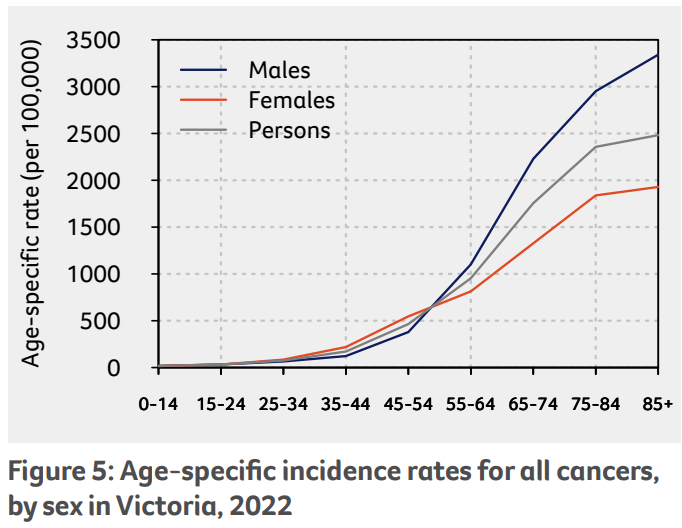Page last updated: October 2024
This webpage was last updated in October 2024.
Childhood cancer in Australia
An estimated 760 children aged 0-14 years old will be diagnosed with cancer in 2024, corresponding to an age-specific rate of 15.6 cases per 100,000 children. [1]
In 2020, the three most common types of childhood cancer were acute lymphoid leukaemia (24%), astrocytoma (10%) and neuroblastoma (6%). [2]
In 2022, 93 cancer deaths of children aged 0–14 in Australia (45 boys and 48 girls) were reported according to the National Mortality Database (NMD). [1]
Finding support services
Cancer Council 13 11 20 can provide information and support, and can point you in the right direction for more specialised assistance.
You can also find the support services that are right for you with My Cancer Guide, which includes services for children with cancer and support for children and families affected by cancer.
Visit My Cancer Guide
Victorian key facts and figures
In 2022, there were 206 cancer cases diagnosed in children aged under 15 years (0.5% of total cancers) and 263 cancers in those aged 15-24 years (0.7% of total cancers) in Victoria. [3]
View more statistics

Childhood cancer survival
Although cancer in children and adolescents is relatively uncommon, survival rates following a diagnosis of many cancers is high.
In Victoria, there were 2,810 males and 2,335 females alive in 2023, who were diagnosed with cancer when they were aged less than 15 years since 1 January 1982. [3]
Extending the age at diagnosis to include adolescents and young adults, there are 6,197 males and 5,523 females alive in 2023 who were diagnosed with cancer when they were aged less than 25 years since 1 January 1982. [3]
Childhood cancer mortality
- In Victoria in 2022, there were 28 deaths in children aged 0-14 years due to cancer. [3]
- Cancers of the blood, brain and central nervous system are responsible for most deaths among children. [3]
- According to the Australian Childhood Cancer Registry, cancer mortality in children aged less than 15 years is rare and declining. Overall childhood cancer mortality rates in Australia decreased by an average of 2.9% per year between 1998 and 2019, a total decrease of 46% based on the modelled estimates. [3]
- Mortality rates from childhood leukaemia declined by 58% in the period 1998-2007 and have since remained stable. [3]
Finding support
- Cancer Council 13 11 20 is equipped to provide specialist cancer information and support services related to childhood cancers. Of the 55,000 calls received per year Australia wide, over 850 enquiries per year pertain specifically to childhood cancer enquiries.
- Online peer support groups are available nationwide for children, adolescents, siblings and families, either conducted by Cancer Council or other specialist childhood cancer organisations.
- Talking to Kids about Cancer is a starting point for having a series of conversations about cancer with children or teenagers.
- Cancer in the School Community is a helpful guide for school staff who would like to support students, families and colleagues affected by cancer. It may also be useful for parents, guardians, students and family members.
- Our Financial Counselling Program provides people affected by cancer with access to a financial counsellor who can provide practical advice and guidance to help manage the cost of cancer. It’s confidential, independent and free for all Victorians.
